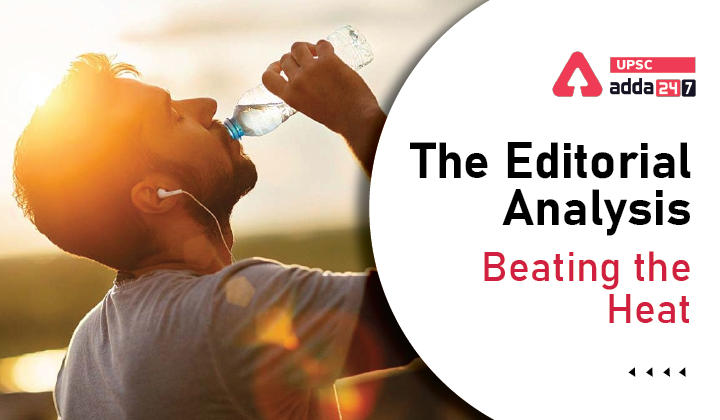Table of Contents
Global Warming- Relevance for UPSC Exam
- GS Paper 3: Environment- Conservation, environmental pollution and degradation.

Global Warming in News
- An analysis of public weather data over the last half a century by the Centre for Science and Environment (CSE), suggests that the all-India average temperature during the monsoon months (June-September) is higher than the summer months (March-May).
Global Warming Trend in India
- The steady rise in the planet’s temperature as a consequence of humanity’s unfettered use of fossil fuel forms the backdrop to altered weather patterns everywhere.
- India too has been registering instances of anomalous weather with alarming frequency with an erratic monsoon and coastal erosion.
- Rise in Monsoon Temperature: According to the CSE Study, Monsoon temperatures are 0.3°C higher than average summer temperatures when compared from 1951-80.
- In 2012-2021, this anomaly rose to 0.4°C.
- Variation Across Seasons: The India Meteorological Department has said that India’s average temperature has risen 0.62°C from 1901-2020 but the CSE analysis says that this has not meant a uniform rise in temperatures across seasons.
- It is the winter (January and February) and post-monsoon (October-December) average all-India temperatures that have risen faster than even the monsoon and summer temperatures.
- Average daily maximum temperature for north-western States in March was 30.7°C, whereas the all-India average was 33.1°C or 2.4°C hotter.
- The average daily minimum temperature showed an even larger (4.9°C) difference.
- Central India’s normal maximum was 2°-7°C higher, while south peninsular India’s normal minimum was 4°-10°C higher than temperatures in northwest India.
Impact of Rising Temperature
- Loss of Lives: there is also evidence of the toll on lives.
- From 2015-2020, 2,137 people had reportedly died due to heat stroke in northwest India but southern India had reported 2,444 deaths due to excess environmental heat, with Andhra Pradesh accounting for over half the reported casualties.
- Urban Heat Island Effect: whereby cities because of concrete surfaces and dense populations tend to on average be hotter than rural habitations. This has also contributed to heat stress.
Way Forward
- Heat Action Plans (HAP): The National Disaster Management Authority is working with 23 out of 28 heat-prone States to develop HAPs that stress changes in the built environment-
- By using material that keeps the indoors cooler,
- Having an early warning system about heatwaves and
- Improving health infrastructure to treat heat stroke patients.
- Implementing and Incentivizing an Effective Cooling Plans: governments must take steps to plan infrastructure and housing in ways that recognise the dangers from a warming environment.
- It is time that India includes financial incentives, preferably via Budget outlays, for effective cooling plans.
Analysis Of DTE Magazine: ”WTO and Global Food Crisis”



 TSPSC Group 1 Question Paper 2024, Downl...
TSPSC Group 1 Question Paper 2024, Downl...
 TSPSC Group 1 Answer key 2024 Out, Downl...
TSPSC Group 1 Answer key 2024 Out, Downl...
 UPSC Prelims 2024 Question Paper, Downlo...
UPSC Prelims 2024 Question Paper, Downlo...
